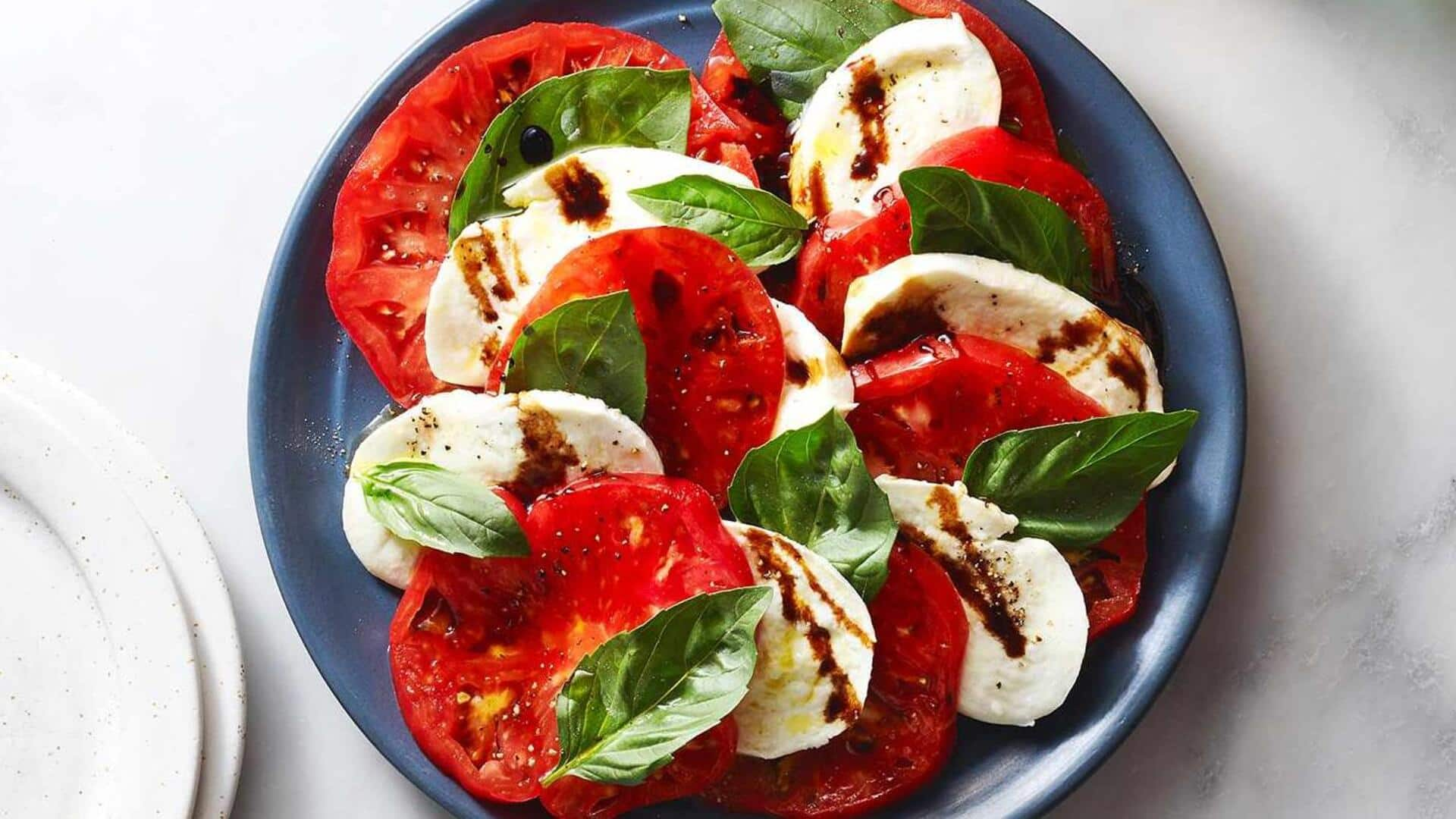
From Italy to everywhere: How Caprese salad became global favorite
What's the story
Caprese salad, with its simple yet vibrant combination of tomatoes, mozzarella, and basil, has transcended its Italian roots to become a global culinary icon. Celebrated for its fresh ingredients and the way it captures the essence of Italian cuisine, its journey from local specialty to international favorite highlights how food can serve as a cultural ambassador, bridging gaps between different culinary traditions.
Historical roots
Origins in Capri
The Caprese salad was born on the Italian island of Capri. It was first made to pay homage to Italian flag colors: red tomatoes, white mozzarella, and green basil. This simple yet meaningful combination soon became a hit among the locals and tourists. The best part about the salad is its ability to celebrate fresh produce without any elaborate preparations.
Culinary appeal
Embracing simplicity
One reason that Caprese salad is accepted so widely is its simplicity. The dish is easy to prepare and depends on high-quality ingredients to do the trick. This resonates with people across the world who prefer easy cooking that lets flavors shine through. The focus on freshness also matches with modern culinary trends that focus on health-conscious eating.
Cultural significance
A symbol of Italian cuisine
Caprese salad has come to define Italian cuisine all over the world. It stands for Italy's commitment to quality produce and old-school cooking techniques. As an ambassador of Italian culture, this dish finds a place in restaurants across borders as part of their menu offerings. Its presence ensures an appreciation and understanding of Italy's rich culinary heritage.
Global variations
Adaptations across borders
As Caprese salad became popular outside Italy, numerous adaptations appeared across the globe. Chefs started experimenting by adding local ingredients or incorporating various presentation styles, but keeping the core elements intact—tomatoes, mozzarella cheese, and basil leaves still remain essential components, no matter what regional twists are introduced elsewhere.